In the first computing universe, there was only Unix. Unix then thought it was unfair to exist alone and executed its ancestral privileges that led to the creation of other awesome operating systems. We can trace every other operating system that exists back to Unix’s original DNA. The only exceptions here might be the Windows NT-operating system that is under Microsoft.
Since we can comfortably classify Unix as the first operating system to come into existence, the heritage of the Unix-like operating systems includes the likes of Chrome OS, Mac OS X, iOS, Linux, Android, Play Station 4’s Orbis OS, Windows OS, and the firmware powering your routers. We classify these OS categories as Unix-like.
Unix’s Current Design Footprints
If you are looking for the original calendar date that brought Unix to life, you won’t be able to pinpoint a specific year, month, day, hour, minute, and second. It is because not all great things that come to life can be put on a predictable scale. However, the history books that investigated the rise of Unix narrate its birth to be between the 1960s and the 1970s. AT&T’s Bell Labs are responsible for Unix’s development. Linux’s priceless design attributes continue to showcase their footprints in the currently modernized operating systems we use.
The first popular trait of the Unix philosophy, evident in the day to day interactions we have with our modernized operating systems, is the efficient use of small modular utilities. Your Linux terminal is the best-case scenario for this trait. The Linux terminal’s simplicity syncs well with the complex tasks it performs through pipes and other features. This non-graphical user interface can also extend to manage and launch powerful graphical programs you might have installed. It is the perfect operating system feature for heavy lifting tasks. Moreover, the Linux terminal also implements powerful shell scripts, which can help you run powerful complex tasks in the background.
Another feature we can mirror from Unix into an operating system like Linux is using a single file system. The single file system feature enables OS programs to have a common communication platform. It is a unique platform of communication for programs and hardware devices. Think of the single file system as a playground with different kids. This playground enables these kids to talk and understand each other and their different fun skill sets. Therefore, the playground manager will comprehend what is going on in the playground the same way you can understand what is happening on your OS each time you interact with different files and hardware devices. This concept is also applicable in the Windows OS use of drive letters to identify and interact with hard drive partitions. This use of drive letters is an inherited feature from DOS. The same inheritance concept is evident in other operating systems where a single file is part of a hierarchy file system tree that links with other files and directories.
Unix Descendants
Tracking down historical footsteps is never an easy task. The path is usually messy and unpredictable, especially when you have to dig into an over 40-year-old past. However, tracking down Unix descendants was not impossible, and this path led to some interesting discoveries. Academia takes credit for developing one of the Unix descendants group, BSD. BSD (Berkeley Software Distribution) operating system is characterized as being Unix-like and open-source. Its design fingerprints carry on through NetBSD, FreeBSD, and OpenBSD operating systems. The original BSD is also responsible for NeXTStep OS. This NeXTStep OS was fundamental in developing Apple’s Mac OS X. Mac OS X then created a strong basis for iOS. The contribution of BSD in the development of other operating system continues to be broad. Play Station 4’s Orbis OS also employs some significant features from the BSD operating system.
As AT&T added more restrictions to the Unix software licensing terms, Richard Stallman reacted by pushing the GNU agenda to life. It was the start of an open-source software campaign that the majority of Linux users are currently enjoying. However, before Linux saw the light of day, MINIX was already in existence. Its main design objective implemented it as an educational-purposed Unix-like operating system. Therefore, it inspired the existence of Linux.
GNU/Linux defines the Linux operating system we currently use since it combines numerous GNU utilities and a single Linux kernel. GNU/Linux is not a direct descendant of BSD. It borrows its design from Unix and other functional implementations from Academia. Therefore, under the Linux hierarchy tree, we can name many embedded OS (popular in devices), Chrome OS, Android OS, and Steam OS.
On the other hand, the Unix operating systems have a commercial branch. Big corporations sponsoring the likes of SGI IRIX, HP-UX, IBM AIX, Sun Microsystems Solaris, and AT&T UNIX are examples of created and licensed Unix-owned OS versions. However, the open-source Unix-based operating systems have significantly overshadowed their existence, but their presence is still evident, especially in corporate sectors.
Why the Unix-Based OS History?
Understanding this history is an appreciation journey on the build-up and maturity of the operating systems we are currently using. We can now comfortably compare and contrast the features of popular operating systems we are familiar with like Windows, Linux, and Mac OSX. For example, the Unix-like traits in Mac OSX and Linux are in their terminal system utility. However, this terminal approach is different from Window’s command prompt and power shell, yet it too qualifies as a Unix-like OS.
The Unix-like traits in the different modern OS we benefit from are like different distributed pieces of pie. Every modern OS that traits itself as Unix-based gets a piece of this pie and may choose to digest it differently.
The Unix Philosophy
Unix philosophy is an established cultural norm or a reference manual software developers need to adhere to whenever they create software for Unix-like systems. Its emphasis on the software structure is simplicity, modularity, and extensive maintenance. We can summarize the Linux philosophy into the following bullet points.
- Prioritize portability over efficiency
- The software design and development approach should be prototype-based.
- The programs you write should implement a universal interface like handling text streams.
- The programs you write should not only function independently but should also be collaborative.
- Each of your program’s output should optionally be an input for another program, whether known or unknown.
- Develop new programs for new tasks instead of bulking up old programs with new features
- The programs you develop should be perfectionists of the tasks they handle.
- A small program is a beautiful program.
SUS and POSIX
SUS stands for Single Unix Specifications, and it is a reference to an operating system’s family standards. It is the compliance standard that qualifies an operating system to use the UNIX trademark. The Open Group are the current owners of this UNIX® trademark. POSIX denotes Portable Operating Systems Standards. The use and support of APIs fall under this standard. Therefore, for a program to be POSIX-compliant and UNIX® certified, the Open Group has to approve.
Top 10 List of Unix Based Operating Systems
Unix’s source code’s permitted availability to the public domain made it easy for developers and vendors to make the needed modification and requirements that suited their target OS objectives. Numerous Unix flavors then came into existence from initiated UNIX source code’s forks. The free UNIX source code has created a viral sensation in the creation of Unix-based operating systems.
Therefore, it is difficult to put a number to the Unix-based operating systems that currently exist. They could be in hundreds or more. However, because impact supersedes numbers, we want to evaluate the 10 most impactful Unix-based operating systems.
1. Oracle Solaris

Oracle Solaris Operating System
The Sun Microsystems are the original developers of this Unix-based operating system. Moreover, it is linked with the AT&T System V and the BSD operating system. SunOS was the first operating system to break ground at Sun Microsystems. This OS publication saw the light in 1982 after drawing its first-version inspiration from BSD. The machines that ran this OS were powerful, inexpensive, and reliable due to Sun’s use of SPARC; as a scalable processor architecture. The version buildup of the OS to 3.x went with the name SunOS. OS version 4.0 was identified as SunOS with Solaris.
The OS development gradually improved, and the release of SunOS 5.0 from Unix system V replaced the BSD. Its publication was in 1992. Sun’s release of Solaris 2.4 supported both X86 and SPARC systems. These creations came from a unified source code base. Oracle then later acquired Sun Microsystems and discontinued the OpenSolaris project.
2. Darwin
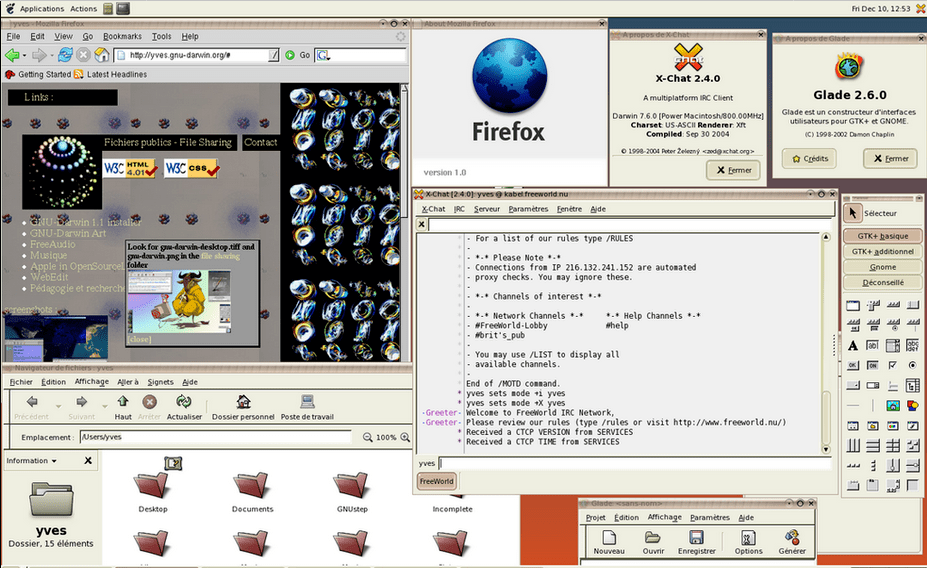
Darwin Operating System
With inclusion to BSD, NeXTSTEP, and Mach, several free software projects contributed to the derivation or development of the open-source Darwin Unix operating system. Apple Inc propelled this OS release in 2000. Darwin’s core components are responsible for the buildup of Apple’s macOS. XNU defines the Darwin kernel. XNU is a hybrid kernel defined from OSFMK 7.8 or Mach.
Internet Systems Consortium joined hands with Apple in 2002 and initiated the development and launch of a community lead operating system. It was named OpenDarwin. However, the project went down the drain in 2006 since Apple considered the OS’s usefulness to be only effective in Mac projects.
3. IBM AIX
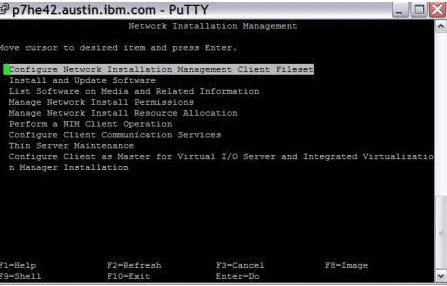
IBM AIX Operating System
AIX or Advanced Interactive eXecutive is an OS whose developmental traits are based on 4.3BSD-compatible extensions and UNIX System V. It is characterized as an enterprise-class operating system. AIX has a fair share of popularity in the commercial UNIX OS market. The IBM 6150 RT machines were the first machine to host AIX after its release in 1986.
Afterward, other hardware platforms like Apple Network Server, System/370 mainframes, POWER, PS/2 personal computers, PowerPC, and RS600 were also supported. The AIX operating system is famed for its reliability, scalability, and security. Moreover, AIX was the first OS to implement a journaling file system.
4. HP-UX
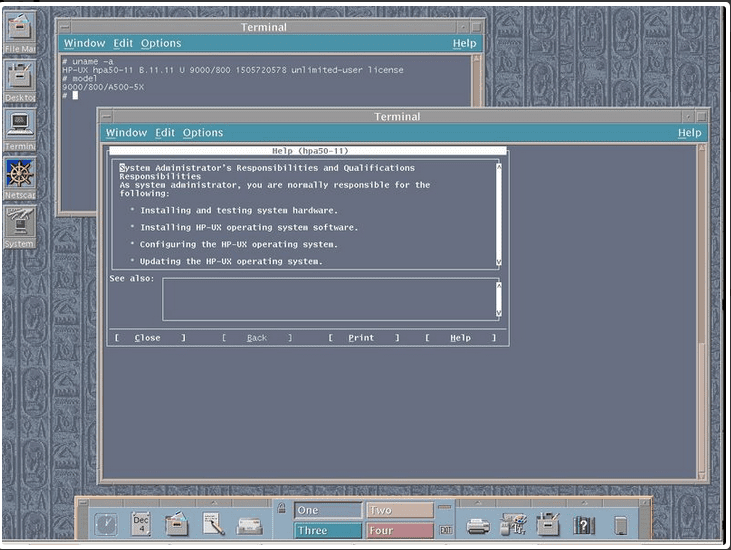
HP-UX Operating System
HP-UX is a shortened pronunciation of Hewlett Packard Unix. This OS is defined by UNIX System V release 4, which came into the limelight in 1984. Its original developmental objective targeted HP’s Proprietary Integral PC. It was later introduced to the hardware platforms of the 9000 series business servers. Under an OS file access permission, HP-UX introduced the access control list functionality for all users.
This OS has some enterprise traits signified by a variety of tools and functionalities integrated into its core. It is famed for its impressive security management features and the flexibility and availability of its memory management.
5. FreeBSD
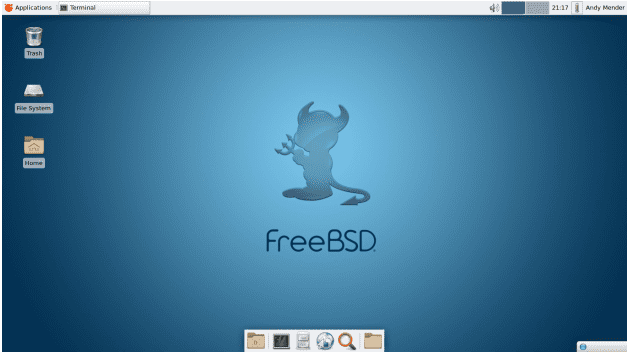
FreeBSD Operating System
FreeBSD is defined by the original BSD (Berkeley Software Distribution). FreeBSD is defined as a feature-complete operating system. It is because of its famed traits that comprise of fully-fledged documentation, device drivers, utilities, and kernel. The OS was introduced to the 80386 processors by engineers Lynne Jolitz and William Jolitz, who afterward named it 386BSD.
However, the popularity of 386BSD in the users’ domain led to the development of FreeBSD from a section of these users. Its official version release saw the light of day in November 1993. FreeBSD is strongly rumored to be a significant contributor to the development of Apple OS. The functional design of this OS makes it general-purposed. Therefore, it blends well with both the server and the desktop environments.
6. NetBSD

NetBSD Operating System
386BSD and 4.4BSD legacy code bases contributed to the development of this open-source operating system. The operating system has a high portability trait. It is supreme in hiding machines’ hardware access details. This supremacy is credited to its specialized hardware abstraction layer. Therefore, NetBSD will categorize a machine’s device drivers as either machine-independent or machine-dependent. The OS 2004’s release 2.0 offered support for Symmetric multiprocessing.
NetBSD is a favorite candidate for embedded systems, desktop systems, handheld devices, and large-scale server systems. Its industrial applicability is about its portability features, code clarity, and careful design.
7. Microsoft/SCO Xenix
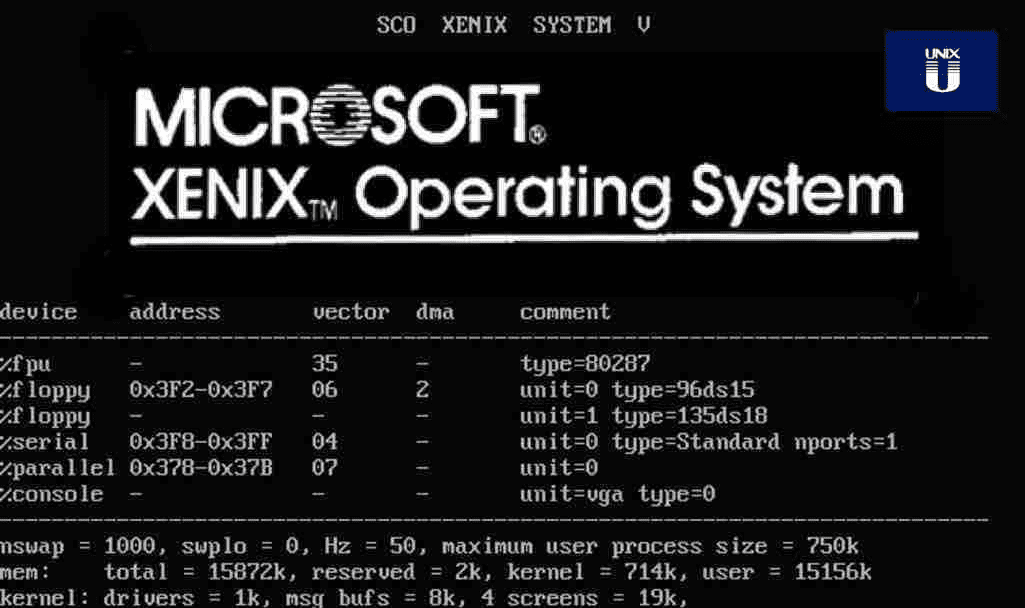
Microsoft’s SCO XENIX Operating System
The Xenix Unix-based OS was under a Microsoft license when it was discontinued during the offset of the late 1970s. UNIX popularity then later created an impression on Microsoft, luring it to purchase AT&T’s license rights. It is still not common knowledge that UNIX rights were once under Microsoft’s wings. However, Microsoft was not directly involved in commercializing Xenix to targeted customers.
The commercial license was given to companies like Intel, IBM, and SCO, whose proprietary processors were used to port the Unix OS. Its breakup with AT&T removed Microsoft’s competitive advantage. Microsoft then later transferred its UNIX rights to SCO, which was an interested party. SCO then worked on a now Xenix release and rebranded it to SCO UNIX. However, the 1991 SCO UNIX V.2.3.4 was the last version release as it failed to move forward in development.
8. SGI IRIX
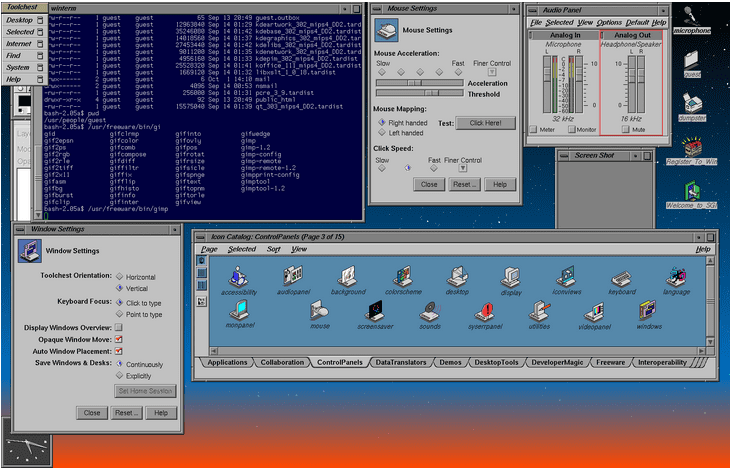
SGI IRIX Operating System
SGI (Silicon Graphics) developed the IRIX operating system, which is currently discontinued. The OS functional objective was to perform on MIPS servers and workstations natively. Its developmental inspiration is tied to BSD extensions and UNIX System V. As this OS versioned up to IRIX 6.0, it gained compliance with UNIX 95, POSIX, and UNIX System V Release 4. The OS is famed for its inventive inclusion of the XFS file system. Moreover, IRIX supported real-time graphics and disks. Therefore, visualization vendors in the field of science and animation found its applicability useful. IRIX OS is also one of the pioneers in the development of a desktop GUI. The last significant IRIX version was 6.5, released in 1998. What followed was the takeover of Silicon Graphics by Rackable Systems. As the world embraced the X86 processors, the MIPS-based SGI products lost their significance.
9. TRU64 UNIX
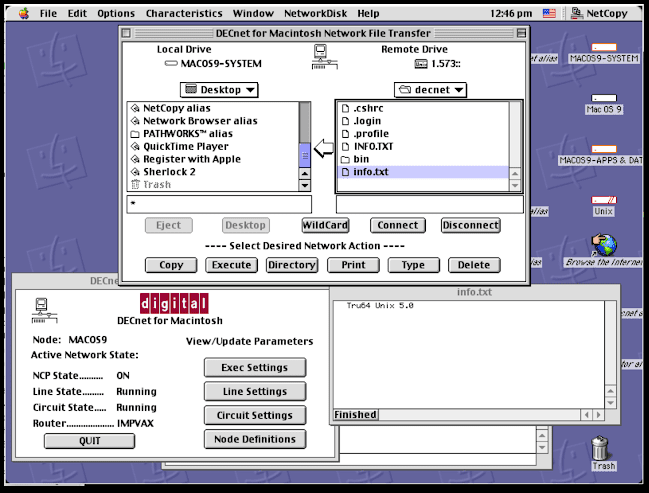
TRU64 UNIX Operating System
It is Digital Equipment Corporation’s UNIX derivative OS. It was discontinued while still having developmental roots to Alpha ISA (Instruction Set Architecture). The OSF/1 OS inspired the creation of Tru76 under the Open Software Foundation (OSF). OSF had the developmental objective of competing with the UNIX System V release. Currently, Hewlett Packard has acquired Tru64 as both a product and a trademark.
Tru64 UNIX 5.0 facilitated clustering facility through a TruCluster Server. A majority of its features like TruCluster, AdvFS, and LSM migrated to HP-UX, an HP flagship UNZIX product. December 2012 was the end-of-life support for Tru64 by HP.
10. macOS

macOS Operating System
Apple created and maintains a commercial version of the Unix-based OS, which is now the famed macOS. It is a polished Mac OS X operating system. The developmental inspiration of macOS is from the Darwin and NeXT operating systems. The Initial release of macOS only adapted well with PowerPC-based machines. The release of macOS 10.4 in 2006 catered for the Intel processors.
The development of an innovative graphical user interface propelled the famed recognition of macOS. The Apple company packaged macOS with Xcode, an integrated development environment. It implied that OS users could use different compilers through its varied interface. The latest macOS release was 2017’s High Sierra. Some of its modernized enhancements included Apple pay, Picture in Picture, desktop Tabs, Siri, a universal clipboard, and an improvised Apple File System.
Final Note
The listed Unix-based operating systems created a strong foundation for the modernized improvements of the operating systems we are currently enjoying. From this list, we now have stable OS distributions and flavors running the technological industry.

8 comments
What isn’t OpenBSD on your list?
My bad, there were a lot of considerations to digest but i also had OpenBSD in mind.
Your Ssertion that Unix was the first OS is just plain wrong, I’m afraid. Many systems predate Unix including OS 360. I worked on that system before Unix was developed.
If you pre-date UNIX you are from Key punch machine days.
Because Bell Labs introduced UNIX in the late 1960s.
Prior to that it was Direct Input/Output User Interfaces (such as GM- NAA I/O) and not actual Multi-task Operating Systems (which this article discusses).
Any credentialing that can justify your comment? Thanks
Correct at 80 I remember those !
Wrong !!!!
Yes there were lots of OS before UNIX like Multics and other mainframe OSes. But it was really UNIX that made the programming environment
it is today that made using computers easier. It also coincided with the IC development and used them on early minis/midrange. Because of UNIX
C was invented by Dennis Ritchie with others to port it to newer systems and other platforms.
unix is no more around, but safe to say it can be called not just a tremendous success, but a phenomenon in itself ? Can Windows afford to make any claim, other than that of being a non-operating system. If you ask, why unix was such a cad, it was simply because it showed ingenuity in its thinking and in its design, in introducing and in incorporating concepts such as a shell and a kernel, treating I/O devices and even network devices as simply files, using concepts such as redirection, piping, parallel and background processing. The only ad and the only venture worth believing in, fostering, nurturing and growing is the spirit of ad-venture. unix was an institution built by and operated by a team of individuals who were radicals and freethinkers, although also venture capitalists. Freedom is a necessary pre-requisite for growth, and there is richness only in diversity. In a climate of fear, anxiety, threats and uncertainty the flame of creativity is snuffed, douched out and killed. Apparently the world is now reeling from and buckling under, going from one environmental calamity, catastrophe and disaster to another, simply because there are’nt enough forests and woods and greenery around. It is never the undertaking in itself as much as the spirit behind it that is always the cause of its sucess as also it’s failure. That it was ideally suited for educational purposes, though designed for commercial ones, meant it could never be made accessible to or possibly even afforded by any educational institute, compelling them to invent and to come up with their own similar versions of it, while also inviting many more opportunists and competitors. Nevertheless it was successful solely because it was rife and replete with ideas and brimming with a sense of hope, a sense of eager anticipation and expectation, a fervent albeit also a nervous excitement and energy.